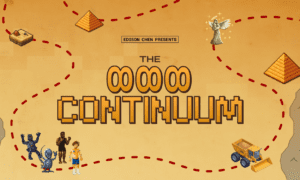Introduction
Construction costs across the UAE and Saudi Arabia are rising at an aggressive pace. In 2024 alone, prices rose by 2–3% in the UAE and by 3–4% in Saudi Arabia, with further escalation expected in 2025. High demand, material inflation, supply chain disruptions, and a shortage of skilled labour have tightened margins across the board. Labour now accounts for 35% of costs in the UAE and 40% in Saudi Arabia, according to the latest benchmarking reports from Stonehaven.
Rather than scaling back ambitions, the industry’s response has been to double down on innovation. Rising costs are functioning as a wake-up call, prompting construction stakeholders to rethink traditional methods. Digital transformation has moved to the forefront as a strategy for this cost containment. Construction companies are investing heavily in tools that promise to improve productivity, reduce wastage and hours, and enhance their decision-making speed.
BIM and 5D Cost Modelling
Building Information Modelling (BIM) has already seen strong adoption in the GCC. In Dubai, buildings over 40 storeys or 300,000 sq ft must be designed using BIM. While traditional BIM provides 3D coordination and clash detection, 5D BIM adds time and cost data into the model. This empowers teams to simulate cost impacts of design changes in real-time.
Stakeholders, from architects and engineers to quantity surveyors all work off a shared model that includes up-to-date cost information, curating a culture of cost-awareness throughout the project lifecycle. This collaborative transparency helps prevent scope creep and avoid the dreaded late-stage cost surprises.
It’s no surprise that BIM adoption is accelerating: governments and clients are increasingly insisting on it, and contractors who leverage 5D BIM report smoother projects with fewer budget blowouts. In short, rising costs have effectively supercharged BIM adoption in the Gulf, embedding cost control into the DNA of project design and planning.
AI-Powered Take-Offs and Analytics
AI is also making inroads in pre-construction. By automating take-offs and quantity extraction from drawings, AI reduces human error and improves speed. This is invaluable in environments where price volatility demands rapid cost updates.
Contractors are also using AI to scan schedules and forecasts for risk. Algorithms can advise sequencing modifications, identify bottlenecks, and even offer appropriate worker placement to keep things on pace. This move from manual analysis to predictive modeling is saving time and millions of dollars as GCC markets manage numerous mega-projects.
Digital Twin Adoption
Digital twins or real-time virtual replicas of buildings are helping reduce long-term costs by simulating performance outcomes. Whether testing the energy efficiency of a façade or identifying maintenance-heavy components early, digital twins allow for virtual prototyping before physical work begins.
While digital twin adoption in construction is still emerging, the trend is rapidly gaining momentum in the region. With the hundreds of millions of dollars invested in digital twin projects for smart infrastructure, the UAE has garnered significant attention. According to industry experts, even a partial digital twin that concentrates on a project’s core systems can aid in enhancing cooperation and avoiding expensive rework. For instance, clients and contractors can digitally tour a facility’s 1:1 scale model and identify problems that would have been costly to address if they had been found during actual construction.
Large investments in digital twin infrastructure for smart cities have been made in the UAE, and Saudi giga-projects are already doing the same. Businesses who use digital twins report cost savings of up to 19% on overall project expenditures, according to surveys. In the latter phases of delivery and handover, this is especially helpful.
Using Cloud Collaboration
Poor communication is the root cause of many cost overruns in the GCC. Outdated drawings or version control problems can result in costly rework when there are several consultants, authorities, and contractors working on the same project.
This is being addressed by cloud-based collaboration tools, which provide a shared digital environment. From wherever, teams now have fast and instant access to the most recent plans, RFIs, and cost reports.
In Conclusion
As the 2025 construction cycle ramps up, the equation is clear: rising costs are driving technology adoption, and that technology is in turn helping you resolve and reduce your costs.
Stonehaven’s 2025 Benchmark Reports for the UAE and KSA provide a deep dive into how these tools are reshaping project delivery in the Gulf. For those interested, more useful data insights are available through Stonehaven’s reports. For construction stakeholders navigating tighter budgets and more complex scopes, the path forward is of course, digital.

































